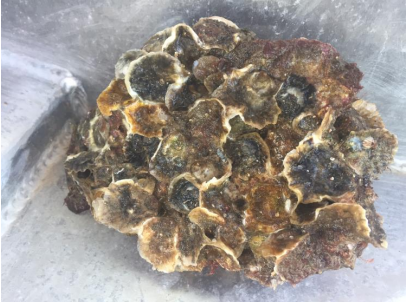Biology
Native flat oyster is endemic to Southern Australia where it occurs from Western Australia to New South Wales between the intertidal zone to a depth of 30m. Native flat oysters gather to form reefs or beds that are further colonised by other shellfish, epifauna and invertebrates (Gillies et al. 2017). Angasi reefs were once common throughout estuaries and bays in Southern Australia (Crawford et al. 2019). However, indiscriminate harvesting and collection by dredging in the 1800s resulted in Angasi reef habitat being largely extinct across its range by the start of the twentieth century (Crawford, 2016). The last remaining natural native flat oyster reef in its entire range is located in Georges Bay, Tasmania, while small clumps and low numbers can still be found throughout Southern Australia. Individual Angasi reefs could have densities >50 oysters/m2 and cover an area of 1.5 ha (Gillies et al. 2017).

Juvenile O. angasi < 25 mm settled on oyster shell observed during 2018 surveys (Keane and Gardner, 2018).
Native flat oysters grow to a size of 180mm. The shell of native flat oysters has a curved side and a flat side. The colour of the shell varies from brown to white depending on the location. The shell edges are brittle and the edges prone to flaking. Native flat oyster inhabits sandy and silty regions of Georges Bay.



